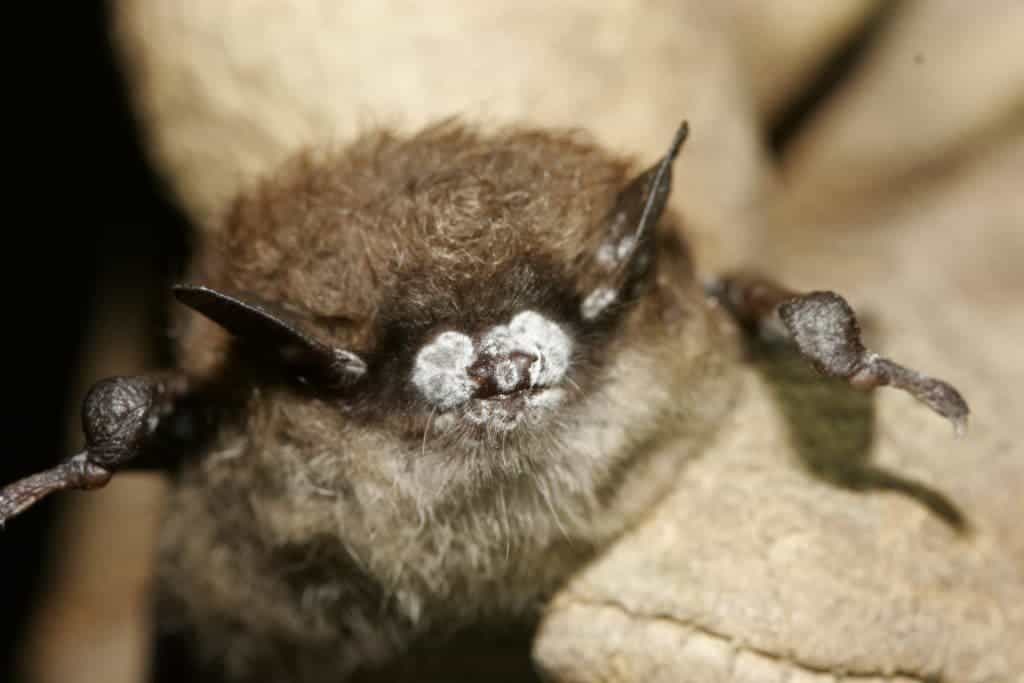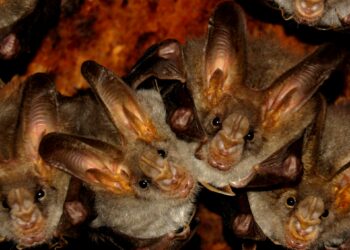In just 7 years, a disease called white-nose syndrome has killed more than 5 million North American bats, almost wiping out entire colonies across 25 states. In Asia however, bats that are exposed to the same disease-carrying fungus are infected in far lesser numbers. The situation is still critical, so scientists are interesting in anything that might keep white-nose syndrome at bay.

Not much thought is given to bats, nocturnal creatures that inspire both awe and fear. Like bees, bats are some of the most valuable animals that help humans sustain their economic activities. Without bats, insect pests would spawn out of control causing economic damage and disease in humans.
University of California, Santa Cruz, in collaboration with researchers from around the world, conducted field sampling in at five sites in China and five sites in the United States. Swabs were taken from hibernating bats to identify and quantify the amount of fungus on each. The researchers were careful to choose sites where the latitude and winter climate are very similar.
White-nose syndrome is a disease affecting hibernating bats. Named for the white fungus that appears on the muzzle and other parts of hibernating bats, WNS is associated with extensive mortality of bats in eastern North America. Bats with WNS act strangely during cold winter months, including flying outside in the day and clustering near the entrances of hibernacula (caves and mines where bats hibernate). Bats have been found sick and dying in unprecedented numbers in and around caves and mines.
Download the white-nose syndrome fact sheet from the U.S. Fish and Wildlife Service.
Pseudogymnoascus destructans, the fungus that causes white-nose syndrome, is endemic to Asia and Europe. It was only in 2006 that the fungus spread throughout Northeastern U.S.
“Uniformly, across all the species we sampled in China, we found much lower levels of infection–both the fraction of bats infected and the amount of fungus on infected bats were lower than in North America,” said first author Joseph Hoyt, a graduate student at UC Santa Cruz.
The bats from China could be more resistant because of four factors: host resistance, host tolerance, lower transmission due to smaller populations, or lower fungal growth rates due to environmental factors. Results suggest that all things were equal other than host resistance, though the biological mechanisms that help the Asian bats repel this destructive disease have yet to be identified.
There’s also reason to believe that not all North American bat colonies are as vulnerable. Though they had a much higher level of infection that Asian bats, little brown bats had relatively low fungal loads. If the variation is a result of genetic differences, it could lead to the evolution of resistance in that species. Big brown bats, have not suffered as dramatically from the disease as other North American species. In contrast, northern long-eared bats, which showed very low variability in fungal loads, have experienced drastic population declines.
“The northern long-eared bat suffers really high fungal loads, and nearly all individuals are infected–there’s no overlap with the Asian species,” said Kate Langwig, a former UCSC graduate student now a postdoctoral researcher at Harvard University,. “From previous work, we’ve seen their populations crashing toward extinction, so it could be a poor omen for that species.”
Results were published in the journal Proceedings of the Royal Society B.






